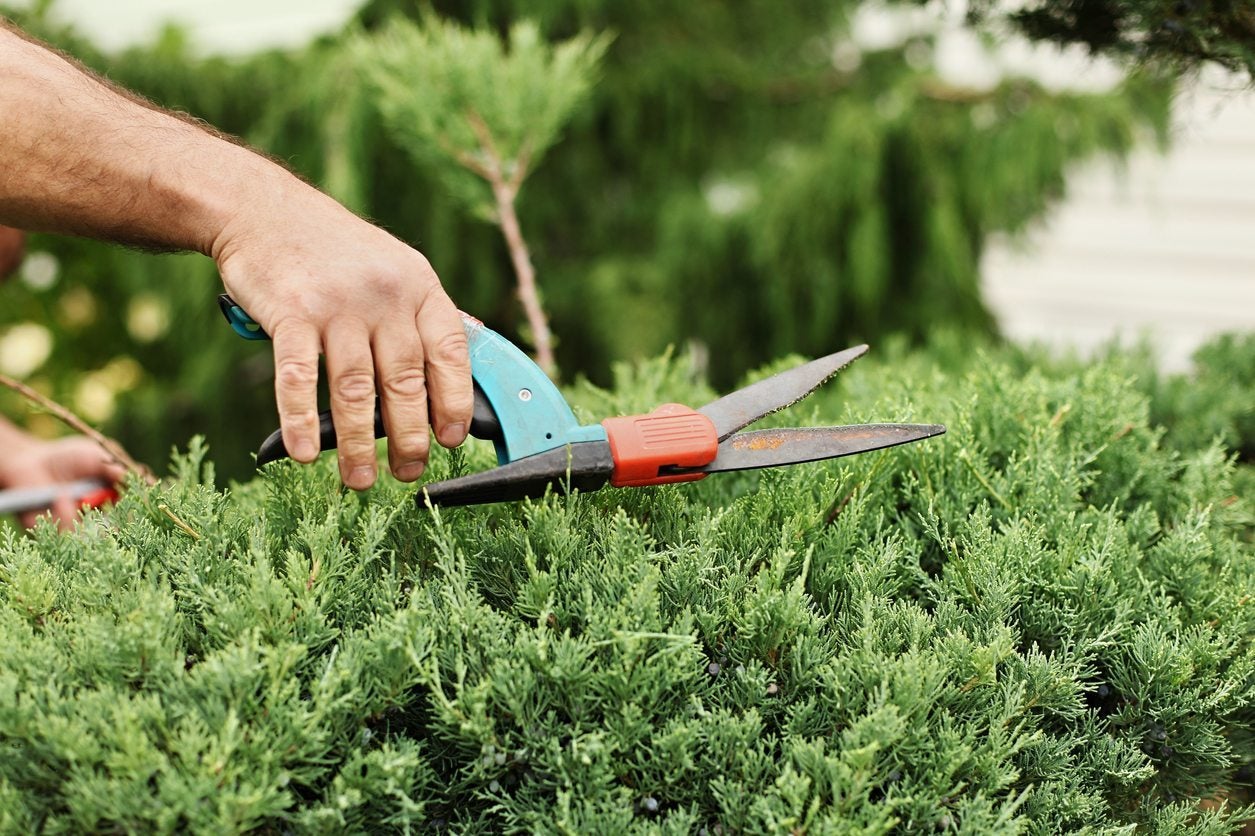Can You Prune An Overgrown Juniper – Tips For Overgrown Juniper Pruning


Juniper shrubs and trees are a great asset to landscaping. They can grow tall and eye catching, or they can stay low and shaped into hedges and walls. They can even be formed into topiaries. Sometimes, though, like the best things in life, they get away from us. What was once a smart shrub is now a wild, overgrown monster. So, what can you do with a juniper that’s gotten out of hand? Keep reading to learn more about how to prune an overgrown juniper.
Pruning Unruly Junipers
Can you prune an overgrown juniper? Unfortunately, the answer to this question isn’t a definite yes. Juniper trees and bushes have something called a dead zone. This is a space toward the center of the plant that doesn’t produce new leafy growth. As the plant gets bigger and thicker, sunlight is unable to reach its interior, and the leaves in that space fall off. This is completely natural, and actually the sign of a healthy plant. Sadly, it’s bad news for pruning. If you cut back a branch below the leaves and into this dead zone, no new leaves will grow from it. This means that your juniper can never be pruned smaller than the border of its dead zone. If you keep up with pruning and shaping as the tree or shrub grows, you can keep it compact and healthy. If you try to attempt overgrown juniper pruning, you may discover that you just can’t get the plant down to a size that’s acceptable. If this is the case, the only thing to do is remove the plant and start again with a new one.
How to Prune an Overgrown Juniper
While overgrown juniper pruning has its limits, it is possible to trim your plant down to a more manageable shape. One good place to start is the removal of any dead or leafless branches-- these can be cut off at the trunk. You can also remove any branches that are overlapping or sticking out too far. This will give the remaining healthy branches more room to fill out. Just remember-- if you cut a branch past its leaves, you should cut it off at its base. Otherwise, you’ll be left with a bare patch.
Sign up for the Gardening Know How newsletter today and receive a free copy of our e-book "How to Grow Delicious Tomatoes".

The only child of a horticulturist and an English teacher, Liz Baessler was destined to become a gardening editor. She has been with Gardening Know how since 2015, and a Senior Editor since 2020. She holds a BA in English from Brandeis University and an MA in English from the University of Geneva, Switzerland. After years of gardening in containers and community garden plots, she finally has a backyard of her own, which she is systematically filling with vegetables and flowers.